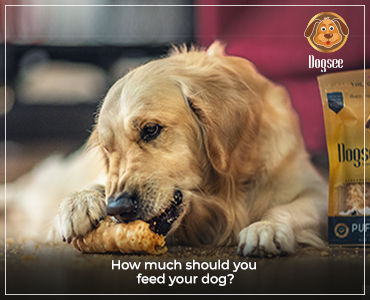
Barking is a natural, common dog behavior. But sometimes, your dog barks excessively for no reason. If the latter is a recurring problem in your home, keep reading to find out how to control your dog’s barking.
Why Do Dogs Bark
If you want to control your dog’s excessive barking, you need to find out the root cause behind their incessant barking. To find the root cause, you need to know one thing: why do dogs bark? Barking is a sign of communication. Different types of barks can mean different things. It is really imperative to know how to differentiate between barks so you can course-correct using the appropriate method to control your dog’s barking.
Territorial/Anger: Dogs are territorial creatures that like to protect and hoard their personal space and belongings. This is why some dogs bark when you try to get a toy out of their mouth. Or come running towards you when they see you petting another dog at the dog park. It’s basically them warding off others and signaling that they are invading their personal territory.
Fear: A fear-based bark almost sounds identical to a territorial bark. Do you notice how sometimes your dogs bark excessively when new faces show up at your house and come inside, especially when the new faces are men? It doesn’t matter if you invite them in yourself, if they are family, or friends, certain men can intimidate a dog even if they mean no harm. It’s because certain men, and people in general, try to dominate without realizing. This threatens a dog and when they come into the house, it makes their ecosystem unstable. Instinctively, your dog does what comes naturally - bark. But what’s different about this bark is when they bark, they move backwards - it’s an important sign to notice.
Danger: Dogs have hyper-hearing which means they can hear noises that are impossible for the human ear to detect. This can happen anywhere. They can hear a skateboard or car horn or your alarm system, when their ear detects an unusual noise, it sets off the bark.
Attention-Seeking: Ever noticed how your dog barks when you’re not paying attention to them for a while i.e. when you’re on a zoom call or doing chores? They bark, and you turn and give them attention - even if it is a command - and naturally it clicks in their brain that if they bark, then you immediately turn your attention to them. This kind of barking is something that is set by the unintentional response to a dog's bark.
Separation Anxiety: Dogs are pack animals who love to be around their people. They do not like to be left alone - it doesn’t matter if they are a rescue from a local shelter or from a breeder. Anything that indicates your potential leaving might set off separation anxiety in your dog. Crates definitely do not help as they are a confined space. So your dog barks excessively because it makes them feel uncomfortable and unsafe.
The above examples are just one type of human behavior that sets off excessive barking. There are plenty others that could trigger your dog to bark excessively. The root cause differs because it is very intuitive to the dog’s exposure and environment. Next time your dog starts barking excessively, back track the actions to figure out exactly what set off the barking so you can proceed to find an optimal solution that can be a win-win for both you and your little one.
How to Control Excessive Barking
Excessive barking needs to be trained out of your dog. Training is usually more effective when you have delicious, irresistible treats in your hand. Usually, right before dogs bark, they curl up their mouth. When you notice this, immediately distract them by giving them a command with a treat in hand. Wait until they perform the said command and then treat them. This will help you control excessive barking in the moment, but also conditions your dog to stop reacting negative to a said stimulus.
Here are some treats to help control your dogs bark
These are bite-sized training treats that are easy-to-carry, easy-to-feed, and easy-to-digest. Because they are bite-sized and easy-to-carry, they are great for outdoor training sessions. These soft dog treats are also high in protein and low in fat, meaning they provide energy and help your pup focus while maintaining weight.
Dogsee Chew Single-Ingredient Treats
These are freeze-dried treats that come in four flavors: apple, beetroot, banana, and coconut. It’s made with a single-ingredient , so, for example, if apple treats are made only with apples and nothing else. These are especially great for dogs with a sensitive stomach because it allows you to monitor what your dog is consuming. This makes it easier to find out what ingredient may be causing insensitivities.

Dogsee Chew Hard Bars
When your dog is barking to get attention or from separation anxiety, distracting them with exercise can help them feel safe and comfortable. It can be hard to take your dog out for a walk every time they start barking out of boredom and that’s where hard dental chews come in to save the day. These hard bars provide mental stimulation and divert your dog’s attention from the stimuli that triggers excessive barking. Plus, they help remove plaque and tartar buildup and freshen breath.

Bottom line, hearing your dog excessively bark can be annoying at times but this is a behavior that can be controlled with the right training and tools that make the training sessions more fun and rewarding for your little one. Now that you know why dogs bark, implement some of these tactics so you and you little one can have a better time!
 HELPFUL0 people found it helpful
HELPFUL0 people found it helpful
Related Blogs
Subscribe to Our Blogs
and never miss on the latest update!















